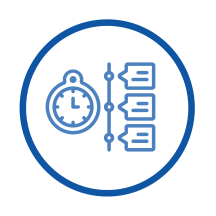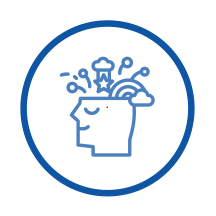PRIORITY 3: Programs, Initiatives, and Strategies
READY FOR HIGH SCHOOL
All Maryland students enter high school on track to meet the college and career readiness standard by the end of 10th grade, and are engaged socially, emotionally, and academically to succeed in progressively challenging and advanced level coursework aligned to college and career pathways.

With an Early Warning System (EWS), the state will provide tools for local school systems to identify students who are at risk of not being college and career ready to get back on track. By utilizing indicators such as attendance, behavior, and course grades, educators do not have to wait for students to fail to know they are at-risk.
Provide teachers and staff access to an integrated data system that updates regularly with students’ indicators across academics, behavior, attendance, and social-emotional learning.
Create a multi-tiered response system focused on addressing the needs of all students, a group of students, and individual student interventions.
Monitor and modify interventions that are not working, and scale those which are successful.
In addition to EWS, implementing the following best practices will leverage the developmental opportunities of early adolescence in the middle grades:
Adopt flexible scheduling strategies such as block scheduling to support the academic and developmental needs of students and include common planning time for teachers to plan instruction collaboratively.
Ensure that classroom organization and staffing patterns support the needs of students through interdisciplinary teaching, or team teaching, to improve the academic and social-emotional outcomes for middle school students.
Provide access to enrichment and elective courses to support student engagement, and schedule advisory periods to support student connectedness.
With an Early Warning System (EWS), the state will provide tools for local education agencies to identify students who are at risk of not being college and career ready to get back on track. By utilizing indicators such as attendance, behavior, and course grades, educators do not have to wait for students to fail to know they are at-risk.
Provide teachers and staff access to an integrated data system that updates regularly with students’ indicators across academics, behavior, attendance, and social-emotional learning.
Create a multi-tiered response system focused on addressing the needs of all students, a group of students, and individual student interventions.
Monitor and modify interventions that are not working, and scale those which are successful.
In addition to EWS, implementing the following best practices will leverage the developmental opportunities of early adolescence in the middle grades:
Adopt flexible scheduling strategies such as block scheduling to support the academic and developmental needs of students and include common planning time for teachers to plan instruction collaboratively.
Ensure that classroom organization and staffing patterns support the needs of students through interdisciplinary teaching, or team teaching, to improve the academic and social-emotional outcomes for middle school students.
Provide access to enrichment and elective courses to support student engagement, and schedule advisory periods to support student connectedness.
Early Warning Indicators & Systems
Early Warning Systems (EWS) represent a collaborative approach among educators, administrators, parents, and communities by using data effectively to keep students on the pathway to graduation. EWS
use indicators to identify students who may be at risk academically or socially and create response systems to ensure students receive
timely and appropriate support by providing the right intervention for the right student at the right time.
The development of predictive early warning indicators has occurred rapidly over the past decade. In the early 2000s, researchers set out to identify the most highly predictive factors of dropping out.
They identified three key indicators (the ABCs) that were better predictors of student outcomes than demographics or test scores. By closely monitoring attendance patterns, behavior issues, and course performance, educators and administrators can proactively intervene and provide targeted support to students who may be struggling.
The best EWS are characterized by a combination of features, such as:
- rapid identification of students who are in trouble;
- rapid interventions that are targeted to students’ immediate and longer-term need for support, redirection and greater success;
- the frequent monitoring of the success of interventions;
- a rapid modification of interventions that are not working;
- and shared learning from outcomes.
Early Warning Systems, when coupled with the ABCs framework, contribute to creating a supportive and responsive learning environment for middle school students.
Early Warning Indicators & Systems
Early Warning Systems (EWS) represent a collaborative approach among educators, administrators, parents, and communities by using data effectively to keep students on the pathway to graduation. EWS
use indicators to identify students who may be at risk academically or socially and create response systems to ensure students receive
timely and appropriate support by providing the right intervention for the right student at the right time.
The development of predictive early warning indicators has occurred rapidly over the past decade. In the early 2000s, researchers set out to identify the most highly predictive factors of dropping out.
They identified three key indicators (the ABCs) that were better predictors of student outcomes than demographics or test scores. By closely monitoring attendance patterns, behavior issues, and course performance, educators and administrators can proactively intervene and provide targeted support to students who may be struggling.
The best EWS are characterized by a combination of features, such as:
- rapid identification of students who are in trouble;
- rapid interventions that are targeted to students’ immediate and longer-term need for support, redirection and greater success;
- the frequent monitoring of the success of interventions;
- a rapid modification of interventions that are not working;
- and shared learning from outcomes.
Early Warning Systems, when coupled with the ABCs framework, contribute to creating a supportive and responsive learning environment for middle school students.

